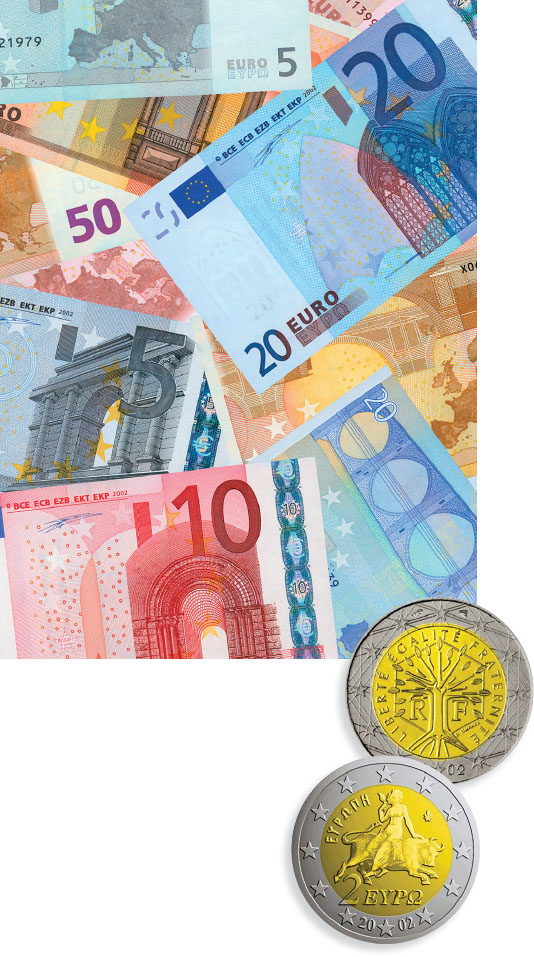A History of Western Society: Printed Page 1018
LIVING IN THE PAST
The Euro

On January 1, 2002, the residents of many European Union countries exchanged their familiar national currencies for the euro, the newly approved coins and banknotes that signaled the arrival of the EU monetary union. The German deutschmark, the French franc, the Italian lira, and many others passed into history, collectibles, perhaps, but no longer legal tender.

The move to the euro was one of the most controversial aspects of the Maastricht Treaty of 1991 that reshaped the EU and laid out a timetable for this monetary union. While some countries signed up, Britain, Denmark, and Sweden accepted the main terms of the treaty but refused to join the currency union (or Eurozone, the group of countries that use the new money). Citizens there rejected the euro, fearing its economic impact and its effects on national autonomy.
To join the Eurozone, a country had to maintain stringent economic conditions — low inflation, tight budgets, and small deficits. In 2013 only seventeen of the EU’s twenty-seven member states used the euro as their official currency. The former East Bloc nations, such as Poland and Hungary, that joined the EU in 2004 and 2007 were excluded from the Eurozone, and so remained something of second-class members.
The euro raised basic questions about a common European identity. What images could be portrayed on the new coins and bills that would do justice to both membership in a larger European community and the variety of national states that made up what was in fact a very diverse continent? The solution was ingenious. The front of the coins would show the denomination and a map of Europe, but the reverse would portray national images chosen by individual EU members. Thus the two-euro coin minted in Ireland features a traditional Celtic harp, while that made in France portrays the liberty tree. Banknotes, by contrast, would feature generic architectural images on both sides that looked real but were not, in order to prevent any national prejudice. Thus the arches on the five-euro note resemble a Roman viaduct; the bridge on the ten-euro note resembles a Renaissance bridge; and the glass and steel façade on the five-hundred-euro note resembles a modern urban office building. All are imaginary structures that look “European” but do not actually exist.

QUESTIONS FOR ANALYSIS
Question
Why did the leaders of the European Union push for a common currency?
Question
How do the images portrayed on euro coins and banknotes reflect the dilemmas of establishing a workable European identity?